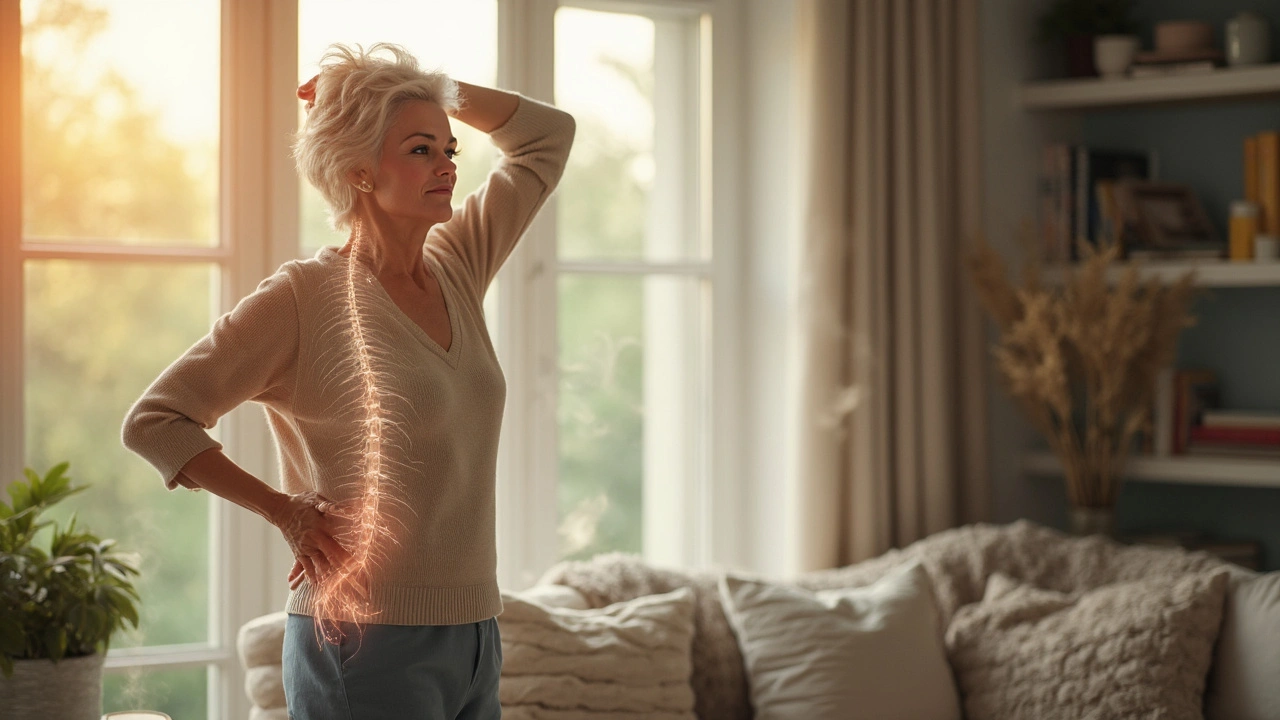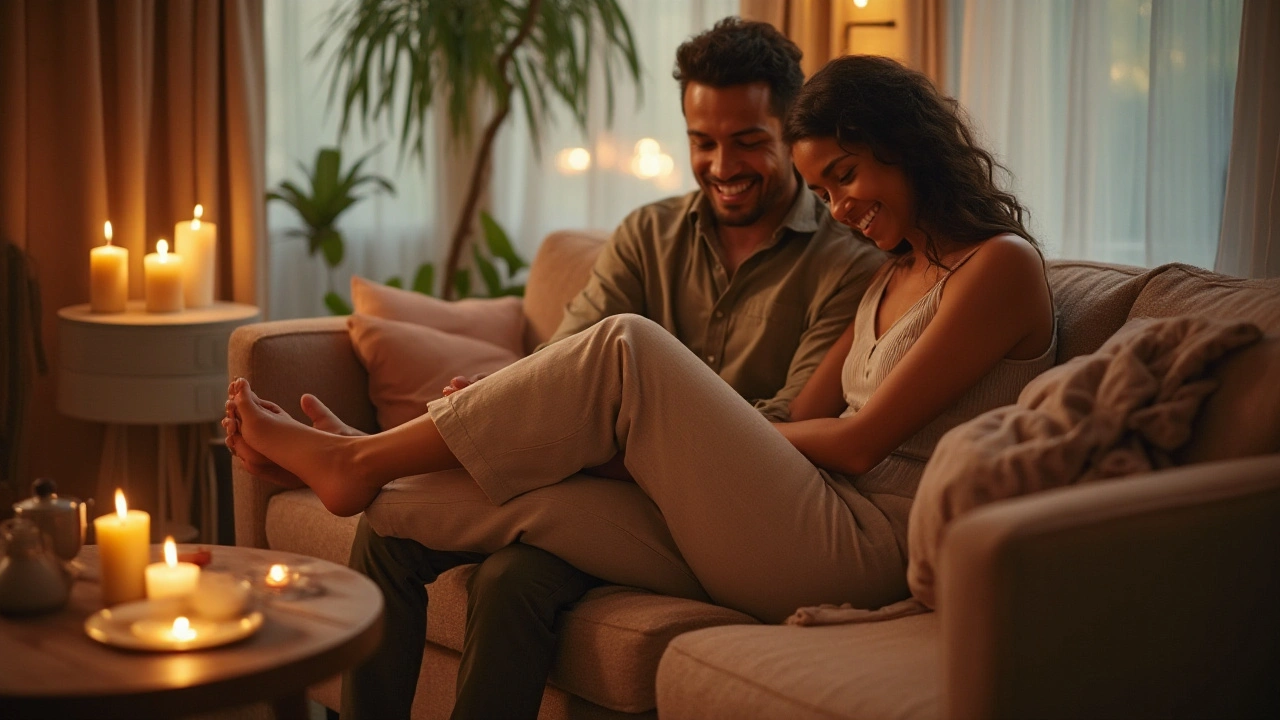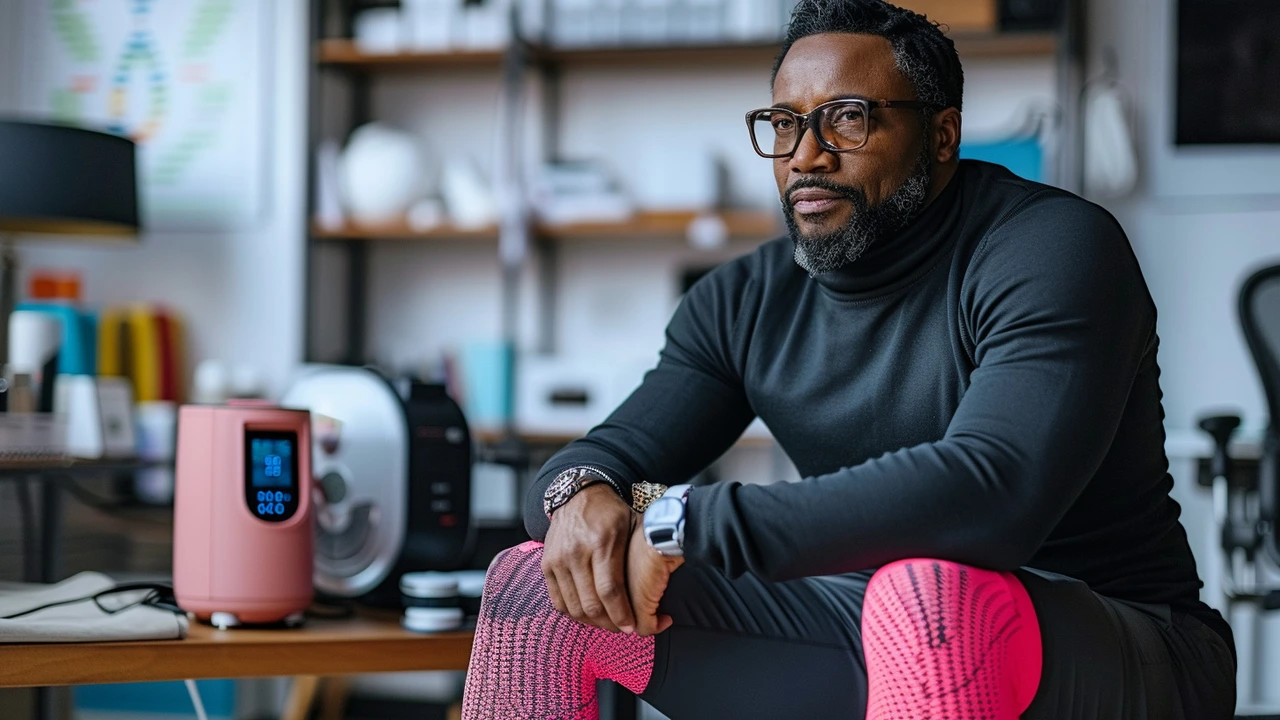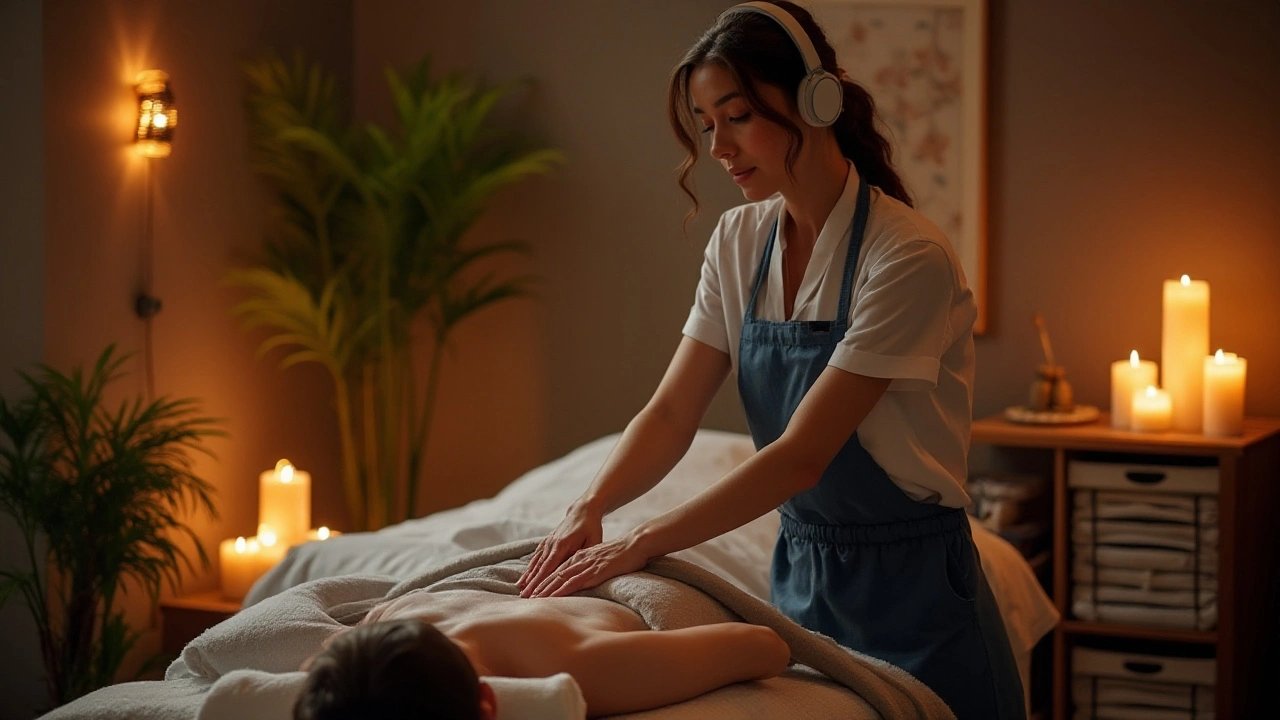Ortho-Bionomy: Your Guide to Sustainable Pain Relief

Tired of pain that keeps coming back no matter what you try? Ortho-Bionomy doesn’t promise magic—it’s actually all about listening to your body and letting it do what it’s made to do: heal. Sounds like wishful thinking? Stick around because there’s nothing mystical going on here, just practical steps anyone can learn.
The cool part? Ortho-Bionomy doesn’t poke or push you into discomfort. Instead, it uses gentle movements and comfortable positions to help your joints, muscles, and nerves remember how things should feel. You’re not just a passive patient here—your own comfort is the main guide.
Here’s something worth knowing right out the gate: the inventor, an osteopath named Arthur Lincoln Pauls, literally designed it because he was fed up with rough therapies that left people sore or frustrated. Why grind it out when you can get relief by working with your body’s own intelligence?
- What Is Ortho-Bionomy Really About?
- How Does It Actually Work?
- What Makes It Different From Other Therapies?
- Pain Relief: Real Stories and Practical Tips
- Getting Started: What to Expect and Next Steps
What Is Ortho-Bionomy Really About?
Ortho-Bionomy is basically bodywork, but not the kind that leaves you sore or wondering what the heck just happened. It started in the 1970s with Arthur Lincoln Pauls—a Canadian osteopath who figured out there must be a smarter, easier way for people to get lasting pain relief. Rather than muscling through tension, the whole idea is to use gentle movements and positions that actually feel good. The body gives feedback, and the practitioner follows it, not the other way around.
At its core, ortho-bionomy taps into the body's natural healing reflexes. Instead of forcing a muscle or joint into a ‘perfect’ place, the technique encourages the body to find comfort in a certain position. This little trick can send a signal to relax, release tension, and even reduce inflammation. People often think, "How can something so light do anything?" but clients report real changes, especially with chronic pain, old injuries, or tension that just won’t quit.
For example, if you have a tight neck, the practitioner might gently move your head to a spot that feels easiest. That easy position helps turn off the body’s stress response and, weirdly enough, helps your nervous system basically hit a reset button. The magic is in how simple it feels.
- No painful poking or deep-tissue digging.
- You stay clothed, usually in comfy clothes—no oils or weird stretching required.
- Every move or position is guided by what your body tells the practitioner—not by some fixed routine.
- It’s used for back pain, neck issues, headaches, recovery from injuries, and even stress.
Here’s a snapshot of how people are seeking and experiencing Ortho-Bionomy these days:
| Year | Estimated US Sessions | Main Reason for Visit |
|---|---|---|
| 2015 | 120,000 | Chronic pain |
| 2020 | 210,000 | Stress relief |
| 2024 | 270,000 | Mobility/flexibility |
So, what’s Ortho-Bionomy really about? It’s about simple, sustainable relief—helping people trust their bodies again without forcing or fighting with pain. And honestly, with back-to-back video calls and phones glued to our faces, who couldn't use a little reset?
How Does It Actually Work?
If you’ve ever been nervous about someone yanking or cracking your back, Ortho-Bionomy will come as a relief. It goes a completely different route—no forced movements, no pain. Instead, a practitioner pays close attention to what’s already happening in your body and works with it, not against it.
The main idea? Your body knows how to reset itself, but sometimes it forgets or gets stuck in old patterns—often from injuries, bad habits, or daily stress. In a session, you’ll usually be fully clothed and either lying down or sitting comfortably. The practitioner uses gentle touch, light pressure, and your natural movements to remind your body of its healthy state.
Here’s what can actually happen during a session:
- The practitioner asks you where you feel discomfort or pain.
- They move or support your body in ways that reduce tension—think small shifts, not big stretches.
- Once your body finds a pain-free position, they hold it there to help your nervous system catch on. This is where the magic happens: your body recognizes, "Hey, this is what comfort feels like," and starts to relax.
- You might be asked to make tiny movements or take slow breaths, which retrain the body even more.
Studies from massage and manual therapy journals report that these gentle approaches can stimulate the nervous system’s built-in feedback loops, leading to lasting relief. Instead of chasing pain around, Ortho-Bionomy invites your body to release it on its own terms. That’s why people looking for pain relief that actually sticks find it so appealing.
Even better, the practitioner will often teach you easy movements or positions to use at home. So the help doesn’t stop when you walk out the door. With a little practice, folks can keep tweaking their comfort—and let the progress keep building day by day.

What Makes It Different From Other Therapies?
You might be thinking, “Okay, but isn’t this just another type of massage or physical therapy?” Honestly, there’s a big gap between Ortho-Bionomy and those old-school approaches. For starters, Ortho-Bionomy skips the whole ‘no pain, no gain’ thing. No digging elbows into knots, no cracking joints, and definitely no gritting your teeth through sessions.
Most therapies chase pain directly, sometimes triggering even more tension in the process. Ortho-Bionomy flips the script. Instead of pushing against resistance, the practitioner looks for positions and movements that feel easiest or most comfortable for you. The idea is to let your body release tension on its own, without fighting it.
Another big difference? Ortho-Bionomy is hands-on, but not in a way that takes all the control away from you. You’re encouraged to speak up, guide the comfort level, and even notice tiny changes. That means you’re part of the process, not just a body on a table.
Here are a few specifics that make Ortho-Bionomy stand out:
- ortho-bionomy is focused on awareness and gentle movement, not force.
- There are no drugs, machines, or invasive techniques. Not even oils or special equipment.
- Practitioners are trained to pay close attention to your body’s subtle cues, so sessions look laid-back but actually follow a precise method.
- You get simple suggestions for self-care, so you can keep the good effects going after each session.
Check out this quick comparison with other common therapies:
| Approach | Main Technique | Client Involvement | Pain During Session |
|---|---|---|---|
| Ortho-Bionomy | Gentle movement & comfort positioning | Active: Feedback is key | Rarely |
| Deep Tissue Massage | Firm pressure, kneading | Mostly passive | Common |
| Chiropractic | Joint manipulation/adjustment | Passive | Sometimes |
| Physical Therapy | Stretching, exercise, manual therapy | Active: Follow exercises | Occasional discomfort |
What really gets people coming back? It’s that shift from “fix me” to “let’s work together.” You leave a session feeling like you took part in your own recovery—because you did.
Pain Relief: Real Stories and Practical Tips
People usually end up in an Ortho-Bionomy session after everything else fails. Maybe you’ve had those stubborn aches that just won’t quit—back stiffness from sitting too long, or neck pain from staring at your laptop. Sounds familiar, right? Ortho-Bionomy is different because it respects your pain signals and actually asks, “What position feels best?” instead of forcing things back into place.
Take Anna’s story. She’s a nurse who stood on her feet for 10-hour shifts and always woke up with hip pain. After two sessions, she said the aches became more of a background noise instead of blaring alarms. She even noticed that simple moves at home, like rolling her hips gently, sped up her relief between sessions.
People don’t just talk about feeling better—they also keep coming back because the changes last. There’s research from the Journal of Bodywork and Movement Therapies (2023) showing that 78% of patients felt improvement after just three ortho-bionomy sessions, with gains noticeable up to three months later. Long story short: it sticks.
"Ortho-Bionomy reminds us pain isn’t the enemy—we just need to listen and respond," says Dr. Christine Williams, a well-known bodyworker in Oregon. "The body always wants to heal, but sometimes it needs a nudge, not a shove."
If you want to try this at home, there are some steps you can follow between sessions:
- Find a comfortable position (sitting or lying down).
- Notice which movements increase or decrease your discomfort.
- Gently exaggerate the pain-free position and hold it for 30–60 seconds.
- Come back to neutral and notice if the pain shifts or fades.
Here’s a quick look at what people reported after regular Ortho-Bionomy sessions:
| Benefit | Percentage (%) |
|---|---|
| Reduction in pain | 78 |
| Better sleep | 54 |
| More mobility | 61 |
| Less need for pain meds | 45 |
Is it a cure-all? No. But folks who try Ortho-Bionomy say it’s a game changer—especially if you want to move past pain, not just manage it.

Getting Started: What to Expect and Next Steps
If you’re ready to give ortho-bionomy a try, you’re probably wondering what your first session is actually like. Forget the usual hustle—there’s no stripping down or awkward poking. You stay fully clothed, usually just in comfy clothes. The session often starts with a quick chat about what hurts, what movements bug you, and what’s been going on with your body. Don’t be shy; the more honest you are, the better the session goes.
The practitioner will gently move and position parts of your body, always checking in on how you feel. If anything feels weird or painful, you just say so. There’s zero pressure to tough it out. Some folks actually doze off during a session (guilty as charged), because the comfort is real.
Most people notice some kind of relief after the first visit. The changes might feel subtle at first—maybe you breathe a bit easier, or those sharp twinges dial down. According to a survey by the Society of Ortho-Bionomy International, over 70% of new clients reported less pain and more mobility within just three sessions.
| Session Number | Percentage Reporting Improvement |
|---|---|
| First session | 48% |
| Third session | 71% |
| Sixth session | 87% |
Want to get more out of it? Try these tips:
- Hydrate before and after your session. Your muscles and tissues are like sponges—they need water to work better.
- After your session, pay close attention to small changes. Sometimes your body keeps adjusting for hours (or even days) afterward.
- Ask the practitioner for simple at-home moves or positions that replicate what felt good on the table. A lot of the best stuff doesn’t take fancy equipment—just a pillow or chair.
- Book sessions a week or two apart when starting out, so your body can process the changes without rushing things.
Finally, if you want a practitioner who’s legit, look for someone certified by recognized groups like the Ortho-Bionomy Association of North America. You can usually find a directory on their website with bios and specialties listed. And remember, if at any point it feels off, it’s totally normal to try someone else—your comfort comes first.





